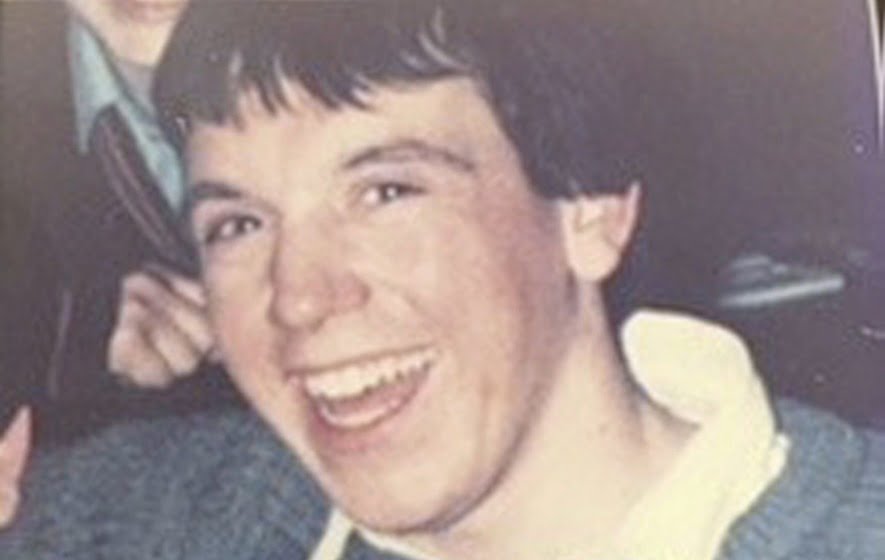The inquest into the death of Francis Bradley continues this week. Mr Bradley was 20 years old when he was shot and killed by the SAS in a suspected shoot-to-kill operation on the 18th of February 1986.
On the night of Francis Bradley’s death, a group of undercover soldiers were deployed to the back of a farmhouse, supposedly to apprehend suspected gunmen. Although the SMU surveillance sub-unit was in command of the operation, members of the reactive sub-unit were also deployed.
The soldiers (ciphered as Soldiers A-E), laid in wait behind a hedgerow. When Francis Bradley appeared in the field, two soldiers opened fire. One soldier, Soldier A, fired one shot. The other, Soldier C, fired a total of 20 rounds. Francis Bradley was struck by 8 of the 21 bullets, including the final three rounds which were shot when he was lying on the ground.
Over the last days, the inquest has heard from former military personnel, scientific experts, and detectives and scientists who were involved in the original 1986 investigation and/or 1987 inquest.
Military witnesses
Soldier D gave his evidence over a video link, though his name and face were withheld from the public. He claims to have absolutely no recollection of the night Francis Bradley was killed. However, Soldier D confirmed that he saw nothing that night that could have justified him firing his weapon.
Soldier B also gave his evidence via video link. He informed the court that while he does not yet have a diagnosis, he is currently seeking medical care for significant memory issues. As a result, he was unable to answer substantive questions and there was no significant cross-examination.
Expert witnesses
Jim Dale, a meteorological expert witness, was clear that the night of Francis Bradley’s death had heavy cloud cover and little to no moonlight. He refuted the soldiers’ claims that the night was clear and bright.
Forensic and ballistics experts, Mark Mastaglio and Ann Kiernan respectively, shared their individual and joint reports to the coroner. Professor Jack Crane, former State Pathologist for Northern Ireland, also presented his evaluation of the post-mortem and pathological evidence. The experts’ evidence demonstrated that soldiers first shot at Francis Bradley when he was facing away from the soldiers. The next bursts of shots came when Mr Bradley was likely either kneeling or on all fours, still with his back to the soldiers. The three fatal rounds were shot on automatic by Soldier C, while Francis Bradley was lying on the ground on his back.
Additional witnesses
Other witnesses included the retired military weapons intelligence documentation officer who attended the scene, and two individuals who lived near the farmhouse where Francis Bradley was killed.
Retired District Inspector Nicholl was the lead investigator following Francis Bradley’s death. During a tense cross-examination from Karen Quinlivan KC, who represents the Bradley family, Mr Nicholl failed to account for notable inadequacies in the original investigation. He was also unable to explain how he arrived at his decision to issue a non-prosecution recommendation for all of the soldiers involved in Francis Bradley’s death.
When pressed about his findings that Soldier C’s 20 shots were not excessive, Mr Nicholl responded that ‘if shots hadn’t been fired there could have been a dead soldier’. Mr Nichols later stated, ‘We were fortunate that no soldiers were killed.’ He hurried to say that it was ‘unfortunate’ that Francis Bradley was killed, but “the damage was done”. Apart from its dubious truth, Mr Nicholl’s statement was at the very least insensitive to Francis Bradley’s grieving family.
Other investigators and scientists who attended the scene were unable to explain why the soldiers’ weapons were not seized immediately.
Upcoming evidence
The inquest was originally scheduled to conclude this Friday, the 15th of March. However, continued delays have forced the coroner to schedule an additional week of witness evidence.
Soldier A, the senior soldier on the ground and the one who fired the first shot at Francis Bradley, is due to give evidence today











